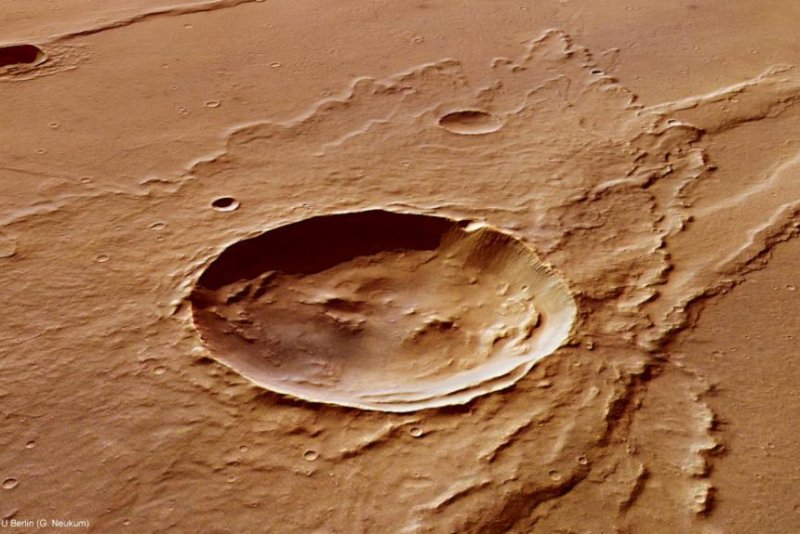Most Martian meteorites found on Earth were ejected from the surface of the Red Planet between 150 million and 586 million years ago. New research suggests these rock samples boast evidence of Mars' water-rich history. Photo by NASA/JPL-Caltech/MSSS
March 6 (UPI) -- Analysis of a mineral found in Martian meteorites suggests Mars' past may have been wetter
than previously thought.
Scientists previously thought the mineral merrillite was proof of a dry environment. The mineral isn't found on Earth but merrillite crystals are often found in Martian meteorites. Merrillite is a derivative of whitlockite, a hydrogen-rich mineral found on Mars.
Scientists at the Lawrence Berkeley National Laboratory created synthetic whitlockite and subjected it to conditions replicating a violent collision -- the kind of collision powerful enough to propel large rock fragments into space.
Their analysis showed such forceful collisions can dehydrate whitlockite, robbing it of its hydrogen and converting it to merrillite.
"This is important for deducing how much water could have been on Mars, and whether the water was from Mars itself rather than comets or meteorites," Martin Kunz, a staff scientist at Berkeley Lab's Advanced Light Source, said in a news release.
"If even a part of merrillite had been whitlockite before, it changes the water budget of Mars dramatically," added Oliver Tschauner, a professor of geosciences at the University of Nevada Las Vegas.
Researchers achieved simulated collisions by firing fragments of the synthetic whitlockite against metal plates at extreme speeds. X-ray images allowed researchers to examine the mineral microstructures post impact and differentiate between whitlockite and merrillite.
The experiments showed the heat generated by the impact can transform whitlockite into merrillite.
Now, scientists must prove merrillite found on Earth was once whitlockite.
"We have to go back to the real meteorites and see if there had been traces of water," Tschauner said.
The only problem is, most of the source material for merrillite-rich Martian meteorites found on Earth is buried more than a half-mile beneath the surface of the Red Planet.















